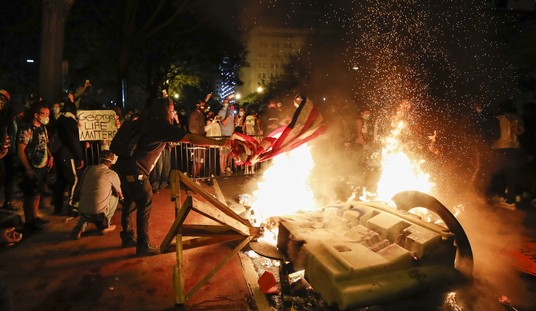Jugglers, mimes, keyboard artists, and assorted musicians perform on the steps of one of New York City’s most prestigious museum, the Metropolitan Museum of Art. These performers are part of New York City’s museum scene every weekend when New Yorkers and visitors alike make the rounds of the many museums in the Big Apple.
New York can well be called Museum City, USA, with more museums than any other city in the country. There are museums of art, history, science, music, broadcasting, fashion, and almost as many museums as there are cultures, professions, and interests. Many are small, offbeat, and sometimes only one floor large, their likes not found outside the Big Apple. A museum hopping trip to New York will be both unusual and educational, and you’ll find that even after you think you’ve seen them all, a new one opens!
New York museums aren’t just collections of things. Some offer concerts, poetry readings, lectures, and movies. Most museums are in Manhattan and can be toured by area, as the larger ones are within walking blocks of one another on “Museum Mile”. A few are in different part of New York City. Many are closed on Mondays, open late mornings, and have shops where you can buy items related to the collections, like books and postcards. Many even have restaurants.
Start your museum trip with a visit to the Metropolitan, the largest art museum in the western hemisphere. This impressive mammoth structure dominates Fifth Avenue in the eighties, covering four city blocks. You can spend several days there and still not see it all.
It has seventeen and a half acres of floor space with 364,000 objects in 287 galleries, covering 5000 years of civilization. One wing has a junior museum just devoted to children’s interests.
It’s famous for its collection of old masters, but it also has the most extensive Egyptian collection outside of the Cairo Museum. There are 45,000 objects from 3,000 B.C.E. to the seventh century B.C.E. The center point of the collection is the Temple of Dendur, rescued from the floods of the Nile with the help of the U.S. As a thank you, the Egyptian government presented the Metropolitan with the temple, now housed in a huge glass walled room. One wall is covered with photos of the temple as it stood in its original site, and its excavation.
Nearby, also on Fifth, between seventieth and seventy-first is the Frick art collection housed in the former home of steel magnate Henry Frick. The elegant building has a delightful atrium which provides a restful atmosphere away from big city noise. The Frick exhibits much of the antique furniture that the family owned. Even wall coverings are original to the house. The Frick provides free audio sets which are geared to individual tours. You can punch in the number of an object and hear information about it.
A little north of the Metropolitan is the Solomon R. Guggenheim Art Museum. Its squat roundness is a sharp contrast to the verticality of the rest of Manhattan. The interior consists of one ramp which spirals upwards to different levels where modern and avant garde art is exhibited.
New York abounds with stately old mansions as well as museums, and often there’s a wedding of the two — like the Frick, the International Center of Photography, the Hewitt-Cooper Museum of Design, the Whitney, and the Jewish Museum. All are collections housed in what were once homes of the super rich. Touring them will also give you the chance to see opulent architecture with interiors of rich and paneled wood and the grand staircases of a bygone period.
The Jewish Museum is one of many interesting ethnic collections. It was also originally a private mansion. Exhibits include the depictions of the daily life of the ancient Hebrews and artifacts of Jews from all over the world, including a tapestry woven by a Chinese Jew.
The largest collection of Indians in all the Americas is The Museum of the American Indian in Manhattan with a forty foot totem pole guarding its entrance. In Harlem there’s a Black Museum; on Staten Island a Tibetan Temple Museum; in mid-town Manhattan there are both Chinese and Japanese collections; there’s even a two floor Ukrainian Museum in a remodeled brownstone. No group in New York seems to have forgotten its ethnic heritage.
If you love Lucy, you’ll love the Museum of Broadcasting and Television where you can spend hours watching tapes of Lucille Ball’s show and almost every television show ever made, from the first shows to the last. The same is true of listening to old radio shows. Every viewer has his or her own booth and headphones, so viewers can concentrate in private.
Another museum in the entertainment area is the Songwriter’s Hall of Fame in Times Square. Here you can try your hand at songwriting at Fats Waller’s old piano, and George Gershwin’s desk.
Still on Manhattan’s east side, away from the bustling world, the J. Pierpont Morgan Library on Madison and 36th Street, houses books, drawings, paintings, and furnishings and you can browse in elegant comfort.
Dominating the west side of Central Park, as the Metropolitan dominates the east side, is the Museum of Natural History and its Planetarium. Here you’ll gape at huge elephants and prehistoric animals, and even be able to pet some of its stuffed specimens. Its fantastic hall of gems and minerals has housed some of the world’s most famous gems.
The adjoining planetarium has spectacular sky shows in its circular auditorium. When the lights are out, and the domed ceiling is filled with luminous stars, you actually feel like you’re sitting outdoors somewhere in the country. The shows are short but make a powerful impact. Displays featuring a number of different types of rocks, volcanic information, and even a bit of a meteorite, are part of the new exhibits.
Near the Natural History complex is the oldest museum in New York. Founded almost 200 years ago, the New York Historical Society has more than a million manuscripts related to American History. Not far from the Society, on 65th and Amsterdam, is the Library and Museum of the Performing Arts. The Museum of Modern Art on West 53rd street has one of the largest collections of modern art in the world, covering 1885 to the present. There are concerts in its world-famous sculpture garden, and films in its auditorium.
On the same block as the Modern are the Museum of Early American Folk Arts and the Museum of Contemporary Crafts. Around the block, on 54th street is the Museum of Primitive Art. Another collection of American Art is at the Whitney Museum of American Art at 75th and Madison. Here you can see some of the great names of American art like Jackson Pollock, Alexander Calder, and Andy Warhol, from the 1900s through the present, and avant guarde art films.
In the far west side at 12th Avenue and 46th street, docked at Pier 86, is the 906-foot-long Intrepid, a World War II aircraft carrier open for touring. Docked next to the Intrepid is the submarine the U.S.S. Growler, also open for tours. The feeling of being in a sub has been enhanced by audio effects like the sounds of water, engines, sonar, and radio transmissions. Adjacent to both is the Intrepid Sea-Air Space Museum which includes an authentic A-6 cockpit where you can try to land your jet fighter on the deck of an aircraft carrier in a total realistic simulation. Visitors can explore the World’s largest aircraft carrier, the U.S.S. Carl Vincent, through a computerized virtual tour.
In the Village Area, near Washington Square, is New York University’s Grey Art Collection. Further east and south is the prestigious Cooper Union’s Art and Design Collection.
At the very tip of Manhattan is the South Seaport Museum which seems to be more of an experience than a museum with folksy musical events promoting instant friendships between participants and spectators.
Even George Washington has a museum in this area. On the second floor of Frances Tavern, where he said good-bye to his officers, there’s a gallery of numerous portraits of him, each one depicting a different version of the Father of our country.
A wonderful museum to visit, and part of the Metropolitan, but located in northern Manhattan, is the Cloisters, perched high above the edge of the water in Fort Tyron Park, at the edge of the Hudson River. It was constructed from parts of European medieval chapels and monasteries, and has a marvelous collection of tapestries and other medieval artifacts, as well as a garden atrium.
You can become immersed in a few of the lives of immigrants who were part of the thousands who lived in tenements from the 1860s through 1935 in the Lower East Side Tenement museum at 97 Orchard Street. Original apartments show visitors the everyday life of immigrants who came to New York. Tours of different apartments, those belonging to Irish, Italian, Jewish, and immigrants of various other cultures, are offered. Tenement apartments ranged from one to three rooms. The tours depart from 90 Orchard Street, the Museum’s office.
One of the most titillating museums in the Big Apple is not MoMo (the Museum of Modern Art) but MoSex, The Museum of Sex, on posh Fifth Avenue, at 27th Street. Apparently this is an appropriate area because it was rife with brothels and dance halls in the 1880s.
Here you can preen at Linda Lovelace, learn about the sex lives of animals, discover the history of sexuality, or just laugh at the campy experience. You’ll certainly perk up everyone’s ears when you return home and tell your friends “I was at The Museum of Sex!”
Some museums, like the Metropolitan, have suggested donation entrance fees. Most New York City museums have free entrance or donation free days.
Whatever your interests and tastes you’ll find a museum to suit them. You can take a New York museum trip over and over and each time you’ll find it’s a new trip.
*****
image illustration via littleny / Shutterstock.com










Join the conversation as a VIP Member